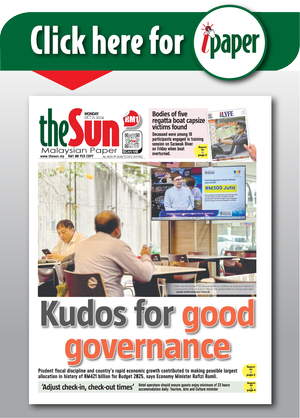ALTHOUGH stamp duty has been present since 1949, compliance has not been the top focus of taxpayers since the tax authorities have been relaxed over the years in enforcing the law. However, recently, there is clearly a noticeable focus by the Inland Revenue Board (IRB) on raising awareness of taxpayers through visits to taxpayers and carrying out audits.
The focus of such visits seems to lean towards auditing the taxpayers and collecting back taxes and penalties. The educational element is a little lacking. The IRB’s right to collect stamp duty based on the legislation cannot be denied.
Historically, stamp duty was collected on a voluntary basis rather than through enforcement of tax laws. In the early days, you could stamp your documents at IRB offices, district offices or attest revenue stamps to documents and stamp impressed by means of a die.
The passive approach adopted in the past is no longer the approach taken by the IRB. Now, the approach is being more proactive in ensuring the law is complied with and enforced.
Taxpayers can no longer wait for the authorities to come. Since stamp duty is applicable on all written instruments covered in the Stamp Act, it is timely for you to review the documents and if necessary have them stamped and pay the taxes together with the late payment penalties.
Where are the likely problems?
You have got to first determine the documents that need to be stamped and the documents that do not need to be stamped. If a document needs to be stamped, then you must classify the instrument and determine what the quantum of the stamp duty is to be paid. This is where the problem starts.
An example of an ambiguity is the difficulty in determining whether payment for a lease is rental or premium. This will be largely dependent on the wording used in the document. As opposed to income tax and other legislation, the issue of the actual conduct of the parties to the transaction versus the legal documentation is not present in the Stamp Act. The Stamp Act focuses primarily on the written documentation.
A common example where there will be differences of opinion between the IRB and the taxpayer is whether the instrument should be classified as an agreement under Item 4 of the First Schedule (RM10) versus other categories in which the stamp duty rates can differ, such as Item 22 in the case of contracts for services (1% of the contract value), or Item 32 for agreements for conveyances or sales (1% to 4% of the either the selling price or the market value of the property, whichever is greater).
Another example would be that sometimes there is difficulty in deciding instruments that merely record the intention of the parties with values mentioned in the document, versus the document being interpreted as a loan document. The stamp duty here could be either RM10 or could fall under Item 22, which could either be 0.5% or 1% of the amount mentioned in the document.
The latest problem taxpayers will be facing is the absence of human interaction when dealing with the Stamp Office. It has become mechanical because of the use of the STAMPS portal and the sudden appearance of large assessments will be a shock to taxpayers.
The way forward
Since stamp duty can trigger significant liabilities, it should not be relegated below the other taxes. It is also important that taxpayers should determine their stamp duty position at the time they are drawing up the documents. Taxpayers should do the proper stamp duty planning within the confines of the law.
This article is contributed by Thannees Tax Consulting Services Sdn Bhd managing director SM Thanneermalai (www.thannees.com).









